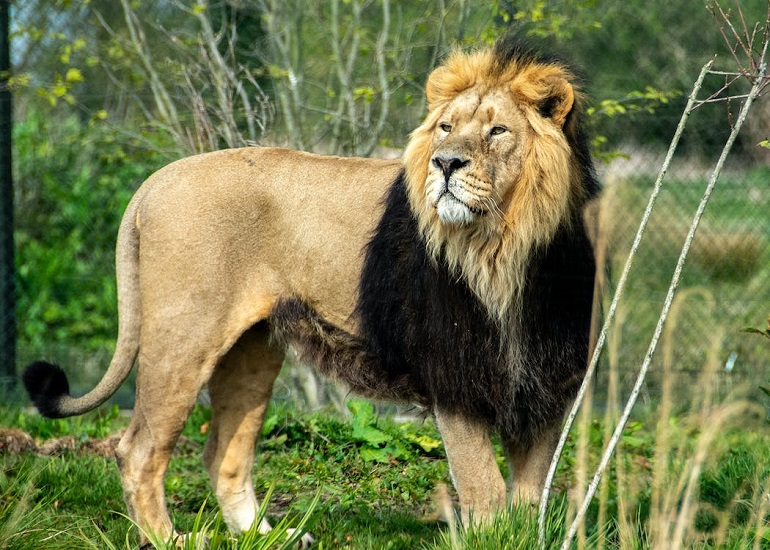Overview
First of all, lions do not live in jungles. They are known as the King of Beasts but live in open grasslands and woodlands. Some even live in semi-tropical areas and deserts. Now that myth is out of the way, we can get down to the nitty-gritty of the lion as a species and member of the big cat family.
We will also cover other details of this magnificent beast, such as its appearance, range, behavior, diet, and much more. Stick around as we take you on a tour of this animal and cultural legends that have survived up to now – for now!
Taxonomy
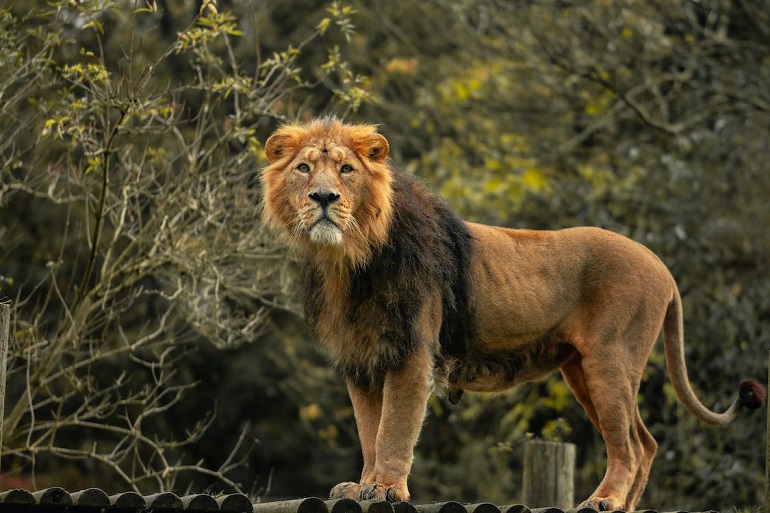
According to scientific classification, the Panthera leo (the scientific name of a lion) belongs to the big cat species. Leo is the Latin word for lion. Genus Panthera basically comprises big cat species within the subfamily Pantherinae of the Felidae cat family.
Evolution
Panthera spelaea covered Europe and the northern regions of Asia, Panthera atrox was present in Asia, and Panthera leo comes from Africa and the Middle East.
The common ancestor was the Felidae. This gene pool split about nine to five million years ago.
Research of existing samples shows that it is unclear what happened after this split because evidence exists for a sister group of the P. onca (jaguar) and the P. Pardus (leopard) that diverged between one and four million years back.
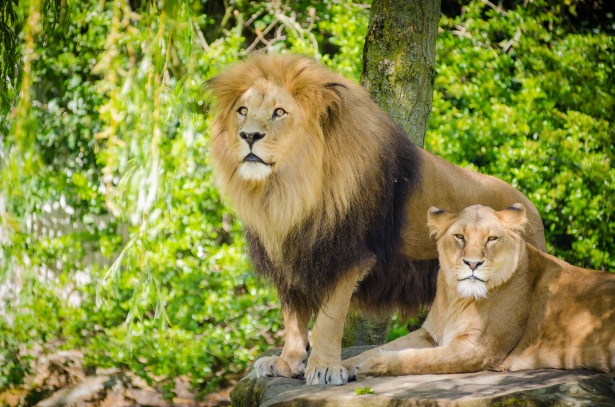
Adding to the confusion is that hybridization took place with the P. unca (snow leopard) about one to five million years ago.
Because fossil samples produce various results, the chart shows two different scenarios for the lion’s ancestry. It seems that the leopard or the jaguar could be the dominant ancestral species of the lion. However, the most recent diagram shows the jaguar as the lion’s most immediate ancestor.
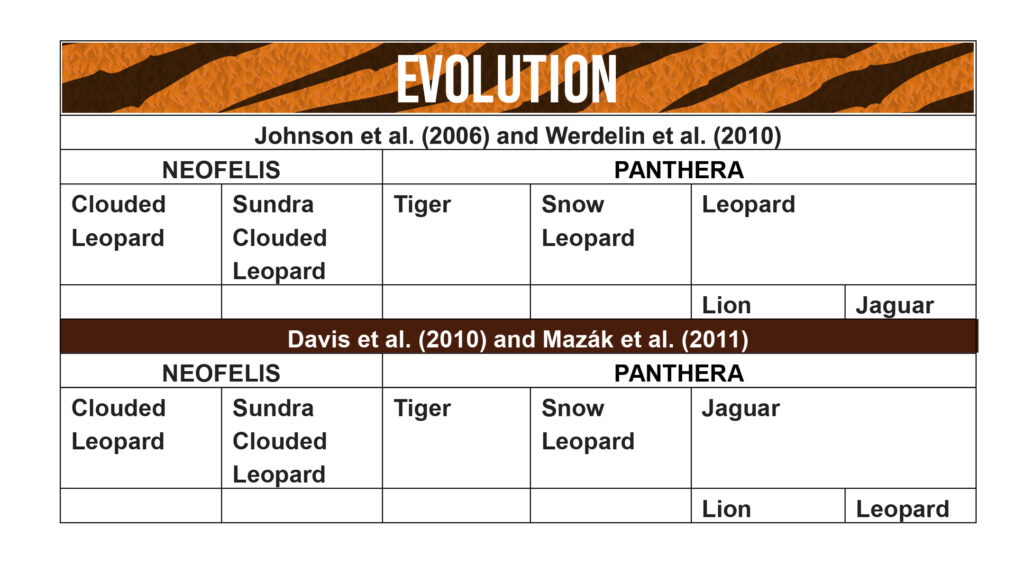
Lion Subspecies
Experts have revised the taxonomy of lions to indicate the following subspecies:
- P.I. leo (Asiatic lion and the extinct Barbery lion). Subspecies or synonyms include P.I. persica, P.I. senegalensis, P. l. kamptzi, and P. l. azandica or northern lion.
- P. l. melanochaita (extinct Cape lion and East and Southern populations). Subspecies or synonyms include P. l. massaica, P. l. somaliensis, P. l. massaica, P. l. sabakiensis, P. l. bleyenberghi, P. l. roosevelti, P. l. nyanzae, P. l. hollisteri, P. l. krugeri, P. l. vernayi, and P. l. webbiensis (southern subspecies or southern lion).
Scientific Classification
The scientific classification for this animal is Panthera Leo.
- Kingdom – Animalia
- Phylum – Chordata
- Class – Mammalia
- Order – Carnivora
- Suborder – Feliformia
- Family – Felidae
- Subfamily – Pantherinae
- Genus – Panthera
- Species – P. Leo
Fossil Records
Experts show fossil records of the following species or subspecies were the ancestors of today’s modern lion:
- P. l. Sinhaleyus (Asia)
- P. Leo Fossilis (U.K., Germany, Czech Republic, Italy)
- P. Spelaea (Beringia, Eurasia, Europe, Canada, Alaska, North Asia, Siberia)
- P. Atro (Americas)
Hybrids
The hybrid is still a Panthera species. Hybrids include ligers and tigons, the result of lions and tigers mating, although the hybrid depends on which sexes mate with which species.
Detailed Description of Lions
Almost everyone knows what a lion looks like, but providing a detailed description of the King of the Beasts is always worthwhile. This description covers its anatomy and appearance, size range, mane, and coat color variations.
Anatomy and Appearance
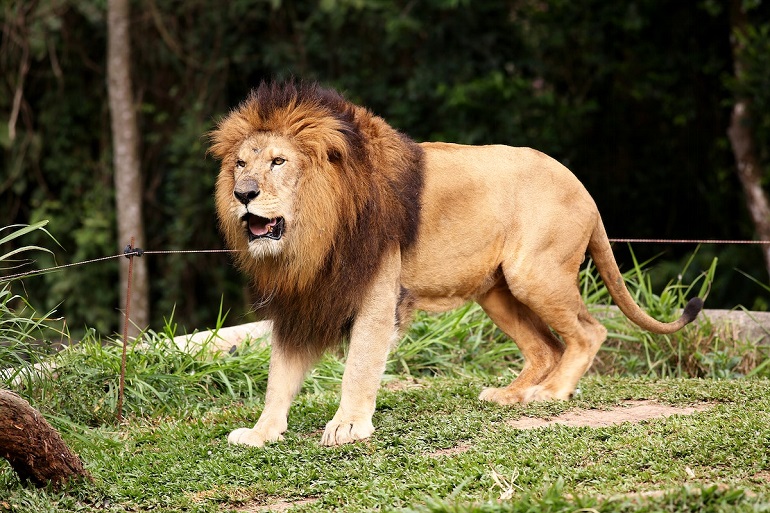
The lion looks a lot like a domestic cat but a LOT bigger. It is a powerful animal with a muscular frame that is deceptive. Scientists have learned that the lion’s muscles comprise 85.5% of its body weight. This percentage is the highest in any living land animal and exceeds the tiger.
These carnivores have broad chests, long bodies, and tails with a signature tuft at the end. Lions have medium-length legs. Their heads are rounded and sit on short necks. They also have round-tipped ears, large tawny eyes, and whiskers. These animals have powerful jaws and large feet and claws.
Lion cubs are born with spots that mostly disappear when they reach adulthood, although faint markings can remain. The fur color of these animals ranges from tan to dark brown, yellow gold, yellow-red, silver, and pale buff. The back colors are typically darker than the underbellies of these mammals.
Size
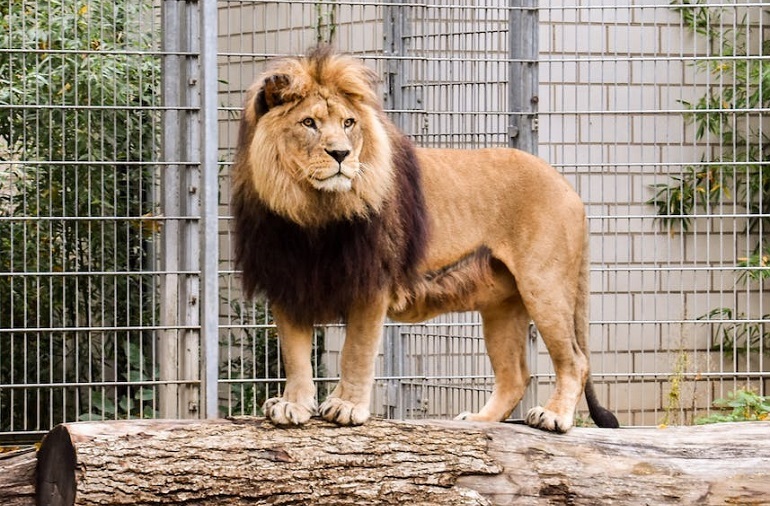
Male lions are much larger than females. These magnificent animals have powerful bodies with long bodies, large heads, and short legs
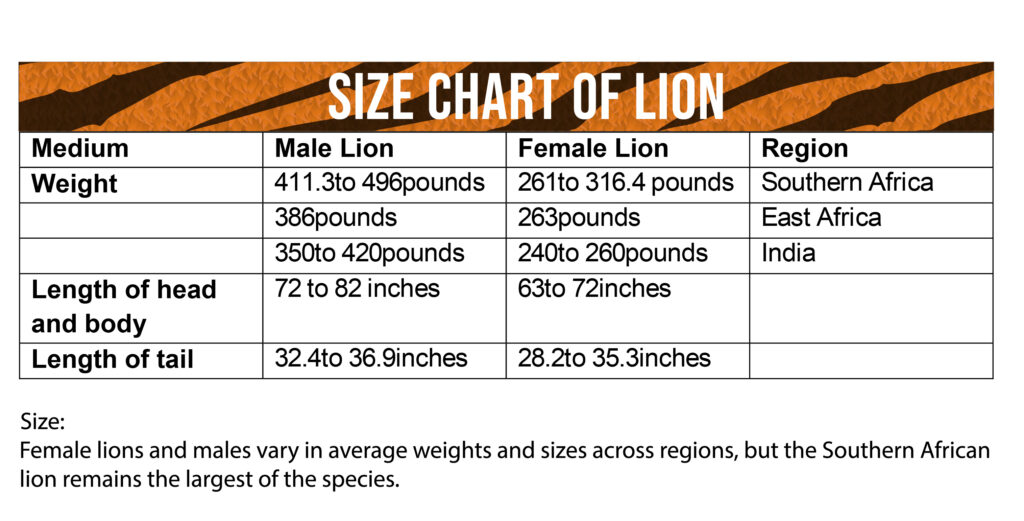
Mane
Mane quality, size, and length also depend on where it lives. So, those in Asia have thinner, shorter manes than African lions due to the hot climate. But those in North America and Europe grow thicker, longer, dark brown manes for warmth.
Male lions in the northern parts of Botswana have more luxurious manes than others, which experts attribute to higher testosterone levels. In contrast, lions without manes have been reported in Timbavati (South Africa), Tsavo East National Park (Kenya), Pendjari National Park (India), and Dinder National Park (Sudan).
Mane colors vary but darken with age. Environmental conditions like temperatures also affect the quality of the mane, with a darker, denser, longer mane usually growing on healthy males.
Females probably look at the males with healthy manes and think they’re well turned out, so my kids will look good and be healthy, so let me give him a try.
Color variation
White lions possess a recessive allele that causes leucism, creating white fur. This color variation is not albinism since its eyes and skin are standard. White lions occurred naturally in the wild but were removed and bred in captivity.
Distribution and Habitat
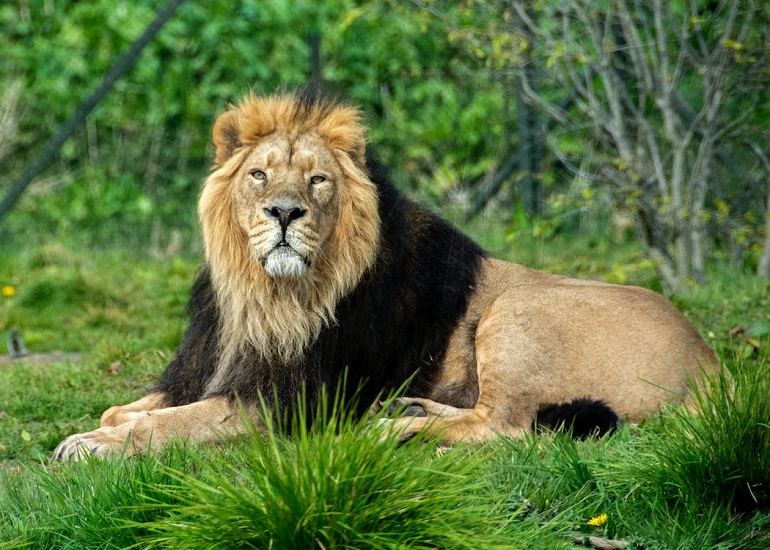
The historical distribution of lions and their habitats are as follows.
Historical Range
In the past, lions occupied many regions like Greece, Palestine, Pakistan, and others. It also dominated in places like Asia and southern Europe. Records also prove the presence of lions in the Caucasus and Southwest Asia, Turkey, Iran, North Africa, and India.
Now, it is only present in Southern Africa, the southern parts of Sudan, and parts of India. Small populations are evident in parts of East and West Africa.
Lion Habitat
African lions typically thrive in their natural habitat, which is open grasslands like those found in sub-Saharan Africa. These mighty animals also live in habitats near rivers surrounded by low-density shrubbery and open woodlands. They even inhabit desert areas and those near snow, such as the lowlands of Mount Kenya.
Nevertheless, they seldom, if ever, dwell in thickly forested areas. But small populations do reside in tropical forests in West Africa. These animals also occupy regions of montane forests in East Africa.
Regrettably, the Asiatic lions are now only present in and near the Gujarat National Park in the west of India, where the habitat has dry deciduous scrub and savannah forests.
Behavior and Ecology
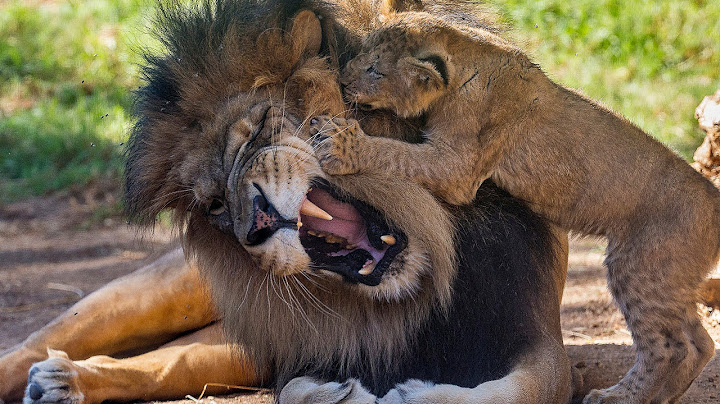
Lions live simple lives in the wild, forming family groups, hunting, eating, and reproducing. Here, you can learn more about their ecology and behavior, health, lifestyle, and communication.
Group Organization
Like house cats, big cats like lions often sleep during the day, preferring to hunt at dusk. They seem lazy because they rest for about 20 hours a day. But they spend this time grooming and socializing.
Prides contain several males and multiple related females. Cubs stay with the pride into adulthood, with pride members numbering up to 15 or 30 members. The larger the group, the more male lions are present. Females do not accept female outsiders into their pride.
Male cubs must leave the pride at two to three years. They form groups with other males, known as coalitions. Nomadic males leave the pride and roam around alone or in pairs. They form their own prides at some stage or join others within five to seven years of being kicked out of their prides. Life is tough for male lions, it seems.
Sightings of solo female lions are unusual and extremely rare. Another rarity is that the Tsavo pride of lions only has one male. This is the only pride where this exception is recorded.
Hunting and Diet
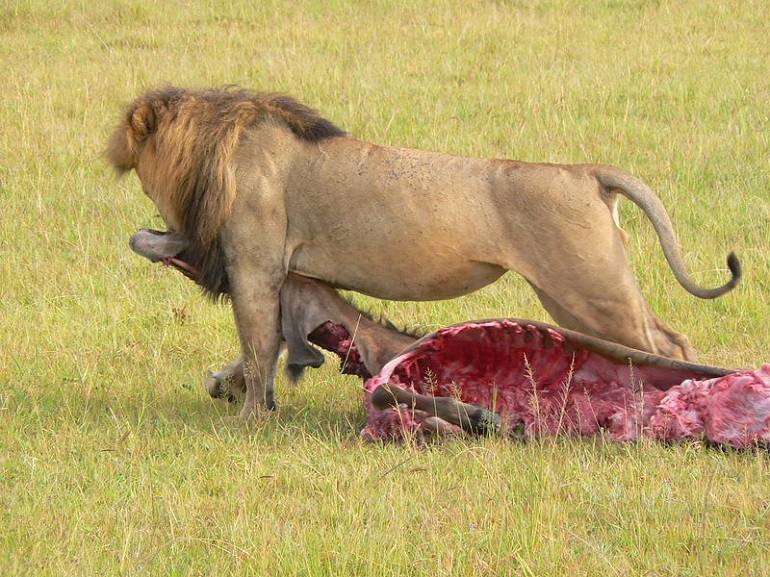
Lions are hypercarnivores and must eat meat to survive. Females eat about 11 pounds of meat daily; males eat about 15 pounds. They hunt any prey, from small animals like porcupines, monkeys, and hares to grass-eating animals like zebras, deer, and buffalo.
They will also hunt large animals like young giraffes and small elephants. Lions also attack livestock.
Although powerful, lions possess limited stamina. To conserve energy, they hunt at night in dense shrubbery for camouflage. The lack of stamina is also why they will eat carrion they retrieve from other predator kills, such as hyenas and wild dogs.
Lionesses are primarily responsible for hunting. Their primary hunting skill is to stalk prey, rush in, jump on the animal’s rump to subdue it, and then suffocate it with a throat hold.
Males sometimes hunt alone and eat meat like the wildebeest and zebra, which they can often kill by themselves. Young lions only join the hunt at two years.
Predatory Competition
Out in the wilderness, in the natural habitats of wild animals, even the most fearsome predators face competition. Depending on the circumstances, lions face competition from their old rivals, the hyenas. These two species have a long history of animosity, so they will kill each other for fun (not much else to do in the wild, I guess).
But life is unpredictable in the wild, so you win some, and you lose some, and the lion must lick his wounds too. For instance, hyenas have the upper hand in the Chobe National Park in Botswana. Here, they attack lions and win, so the lions work for them because they steal more than 60% of their food.
But the opposite in the Ngorongoro crater region of northern Tanzania. Here, the hyenas work for the lions, who steal most of their kills. This attitude forces the hyena population to make more kills, creating an abundant food source for their bosses.
Other predatory competition includes leopards and cheetahs. Lions actively climb trees to retrieve leopard prey, although they are less comfortable or as agile in trees than the leopards. Cheetahs are far smaller than lions, so they play it safe by hunting in territories and at times when lions are not around.
Lions are also not fond of wild dogs. They will kill them and their pups just like they do with hyenas. And although lions do not often fall prey to competitors when sick, old, or injured.
Reproduction and Life Cycle
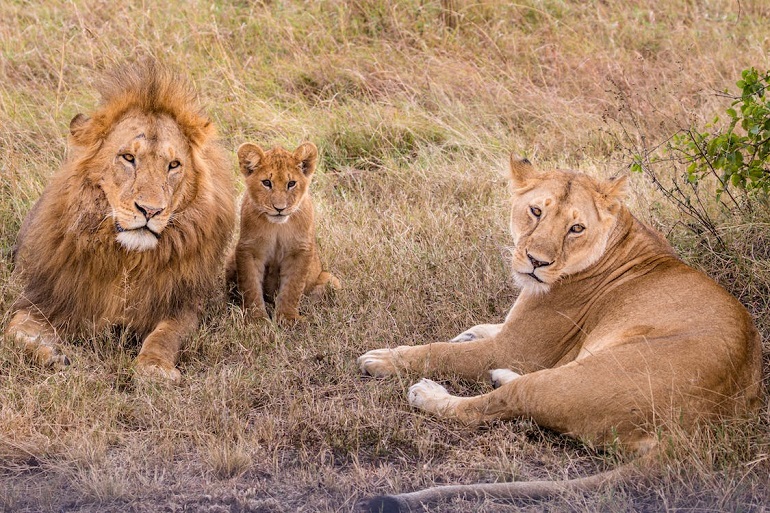
Lionesses are sexually mature at four years and are polyestrous. They also synchronize their reproduction cycles, so they have cubs at approximately the same time.
Lionesses can copulate with several males when in heat, and they mate repeatedly throughout the day. Males insert their spined penises into females to promote ovulation at any time of the year.
Her gestation lasts for about 112 days. She typically has a litter of one to four cubs, which she births in an isolated cave away from the pride. Typically, she only rejoins the pride after two months, moving them often to avoid predator attention until then.
Sadly, the cub’s survival rate is as low as 20%. They fall prey to hyenas, leopards, other predators, and male lions who want leadership and kill all cubs that are not their own.
Health and Mortality
The health and life of these animals are impacted from various angles, including:
- Attacks from other predators that cause death.
- Attacks that cause infection or death.
- Death from injuries while hunting
- Ticks and infections
- Tapeworms from antelope meat
- Stable fly infections
- Canine distemper virus (CDV) from domestic dogs (they also die from encephalitis or pneumonia during such outbreaks)
- Feline immunodeficiency virus
- Lentivirus
Communication
These big cats growl, snarl, and roar to communicate with each other. They can also make affectionate sounds that include purring or puffing. Other vocalizations are humming and bleating. These vocalizations indicate anything from greetings to warnings and other communications of affection or disapproval.
Physical language involves head rubbing, nuzzling, and licking or allogrooming. Other communication strategies include spraying to mark their own territory and scratching the ground and objects to warn off predators.
Facial expressions include grimaces of the flehmen’s response when noting chemical signals. They open their mouths and bare their teeth when sniffing signals. They also wrinkle their noses, relax their ears and close their eyes when smelling various odors.
Conservation Status – Extinct Lion Species and Subpopulations
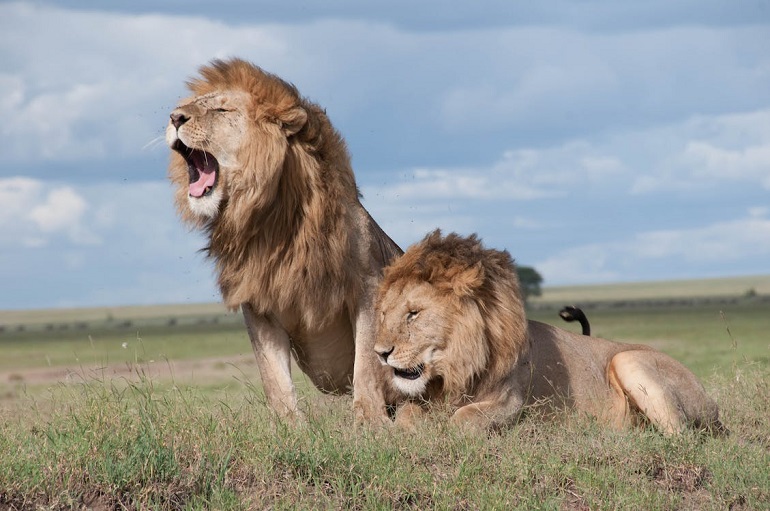
The following lion species and subspecies have already become extinct:
- Barbary lion, other names are the Berber lion, Atlas lion, Egyptian lion, or North African lion (northern and western regions of Central Africa and North Africa)
- Cape lion (South Africa)
- Eurasian cave lion (Europe, Asia, and the Eurasian steppes)
- American lion or American cave lion (Mexico and North America)
Scientists first thought that the northern African subspecies and the Barbary lion were unrelated. But, they investigated DNA lion samples and found that the Barbary lions were closely related to those from North Africa and not a northern subspecies.
Experts believe gladiators probably fought this species, also known as the royal lion. This aspect comes from the royal families of Morocco and Ethiopia keeping the Barbary lions in captivity or as pets.
The Cape lion weighed up to 600 pounds (as much as a tiger). It roamed across the plains of South Africa before going extinct in the mid-19th century. This animal had a darker coat and mane than today’s big cats and lived a life of isolation.
Now, scientists say that it was not a distinct species either, but it may have relatives in zoos across the globe.
The Eurasian cave lion was identified as Panthera Leo or P. Spelaea. This animal was native across Europe, Asia, and the Eurasian steppes. It became extinct over 12,000 years ago.
American cave lions inhabited areas in Mexico and North America approximately 12,000 years ago. Experts surmise that this animal weighed close to 1,200 pounds, the largest species on record. Cave paintings show this subspecies did not have a mane or rarely had one.
Lion conservation efforts include breeding captive lions and other national programs in Africa and Asia to preserve this magnificent creature. Despite these efforts, lion numbers and populations are dwindling rapidly.
In fact, their numbers declined by over 40% between 1993 and 2014. Now, the IUCN estimates that there are fewer than 40,000 left.
Interactions With Humans
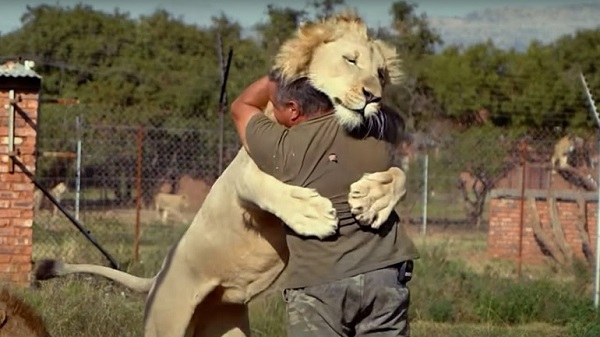
People have been interacting with these big cats for centuries. These interactions include zoos, circuses, hunting, games, and man-eaters.
In Zoos and Circuses
Circuses and zoo exhibitions started in the 18th century, although records show people keeping wild animals in captivity or taming them well before this time. Some examples of early zoos date to the 13th century when they were known as seraglios.
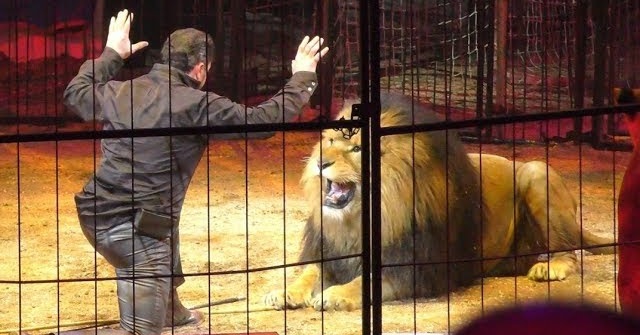
Most royal families were interested in this practice, also naming these captive environments menageries. Even earlier collections of wild animals are recorded in Britain and Europe from the 11th century.
Hunting and Games
Lion hunting has been the sport of kings since time immemorial. Monarchs exercised their power and authority, often killing them to entertain audiences and show their prowess over this wild animal.
Such planned hunts date to ancient Egypt in 1380 BC. Another royal, Emperor Ashurbanipal of Assyria, enjoyed hunting them, killing over 100 in a decade.
Emperors avidly pursued killing them in Africa and Asia. The ancient Romans used them to fight gladiators and perform executions. Likewise, the Masai people in Africa kill them to prove their progress from boyhood to manhood.
Man-eating Male Lions
At the close of the 20th century, two males from Tsavo earned themselves a reputation as the Tsavo maneaters. They killed 28 laborers working on the railway between Uganda and Kenya over nine months. The Ghost and the Darkness movie is based on these events.
Other incidents of man-eating big cats were recorded in rural Tanzania from 1990 to 2005 and in another location from 1988 and 2009. The Kruger National Park in South Africa is another site where man-eating lions are thought to cause the death of many refugees. These refugees cross over from Mozambique at significant risk to themselves.
This is why I don’t like camping in rural areas – they’re just too dangerous!
Threats to Survival of Lion Populations
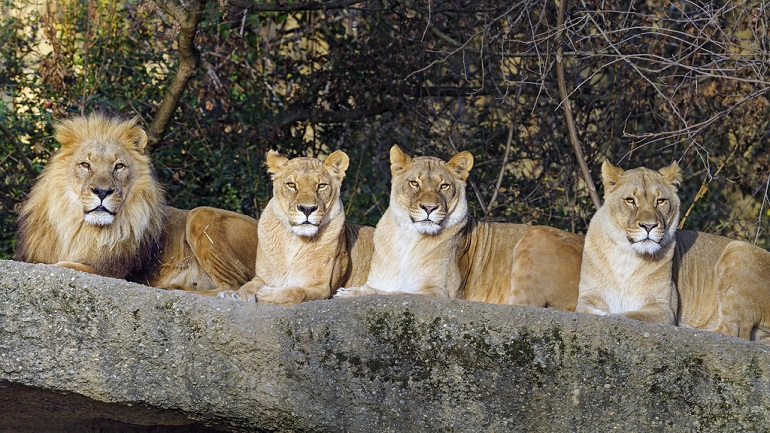
Several factors threaten the survival of lion populations. These threats include the following:
- Illegal wildlife trade
- Reduced prey (possibly due to overhunting, climate change, and bushmeat trade)
- Hunting lions (overhunting, trophy hunting)
- Poaching – (local communities sometimes poach to protect livestock, kill for lion bone trafficking for traditional medicine and rituals or ceremonial kills)
- Destruction of habitat
- Human conflict (war, encroachment of local human populations on lion territory, agriculture, local people killing them in revenge for deaths in their own territory)
What Are a Liger and a Tigon?
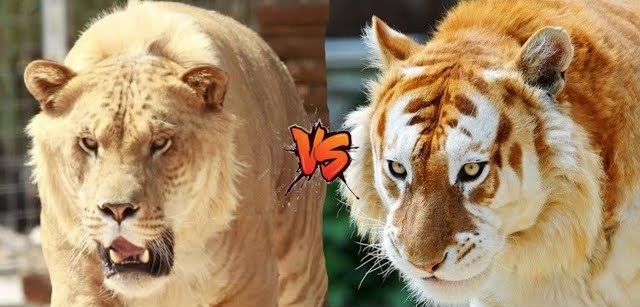
When the male lion mates with a female tiger, they create hybrid cubs known as ligers. Ligers are massive when they grow into adults – much larger than tigers. The earliest evidence of these pairings reaches back to the middle 1800s in India. Female cubs were called ligresses.
Ligers are sociable and love swimming in the water, which are traits of both parents. The appearance of these animals varies depending on parental characteristics. Some cubs will have pale darker stripes on lighter backgrounds.
Another possibility is that the offspring will show light rosettes on their coats, like lion cubs. Rosette colors also vary from dark to light, blending in with the overall coat shade. Likewise, the underbelly is lighter than the top half of the animal.
Tigons are the progeny of the male tiger and lioness. These pairings are less frequent than the opposite since the lioness is not open to mating signals from the tiger. Tigons are smaller than ligers, but both hybrids remain fertile and can breed and reproduce.
Lion vs. Tiger: Which Is the More Dominant Predator?
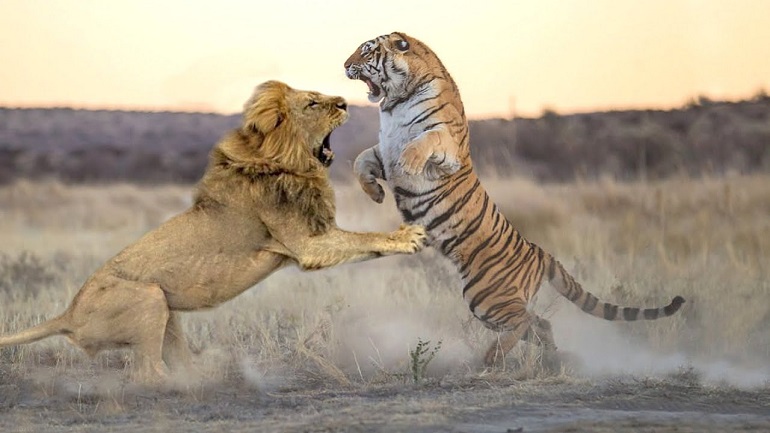
In terms of sheer size, the tiger is obviously dominant. Where the average weight of a lion is 496 pounds, the average weight of a tiger is 660 pounds. The tiger is almost twice the lion’s length, too, at 12.8 feet, whereas the lion is only about 6.8 feet.
Regarding hunting prowess, the tiger has a success rate of about one to two kills in 20 attempts. This figure equals a 5 to 10% hunting success rate. They hunt in groups most often, so it’s logical that their success rate will be better than the tiger, which hunts alone.
Lions hunting in groups usually have a kill rate of 15 and 25%. This figure can go as high as 30%, depending on where you look for information. When they hunt alone, they typically have a success rate of between 17 and 19%.
I’ll leave it to you to decide who the winner is. From my perspective, I’ve made up my mind!
Lion Population — How Many White Lions Are Left?
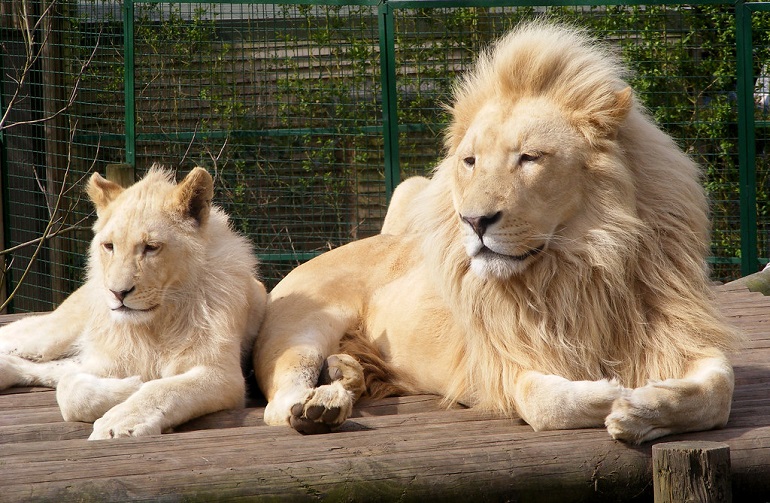
The numbers for white lion populations differ depending on where you look. Some sources maintain that there are 13 white lions in captivity and about 100 in the wild.
Other sources say that there are 15 white lions in the wild. Either way, they are classified as Panthera Leo and not seen as a separate subspecies. But they are under threat and listed as vulnerable, including the white lion.
Cultural Significance
Lions roam across several continents like Africa and Asia, and their ancestors have roamed freely across many more, providing cultural significance wherever they go.
Africa
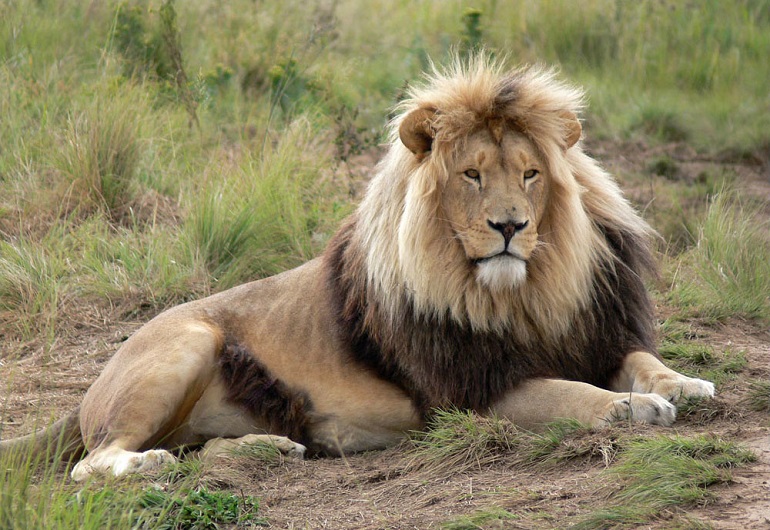
In Africa, the lion is known as a king, is dominant, and is the focus of many stories in the Mali Empire and the Swahili language. It is a powerful, royal beast that deserves respect. The lion was always at the top of the wildlife food chain in West Africa.
In other areas of Africa, this animal symbolizes healing and is a go-between for seers and the supernatural world. In contrast, other African folklore views them as lazy and stupid – easily tricked by other animals.
But the Egyptians revered the lioness depicting these big cats in deities like Pakhet, Menhit, and Mafdet. Another link is the sphinxes in Egypt that reflect the lion’s body with a man
They were invoked for protection and guarding, primarily because of their connection to the sun god Ra. Lions also played a massive role in the sphinx – with a lion’s body and a man’s head – in honor of the pharaohs.
The East
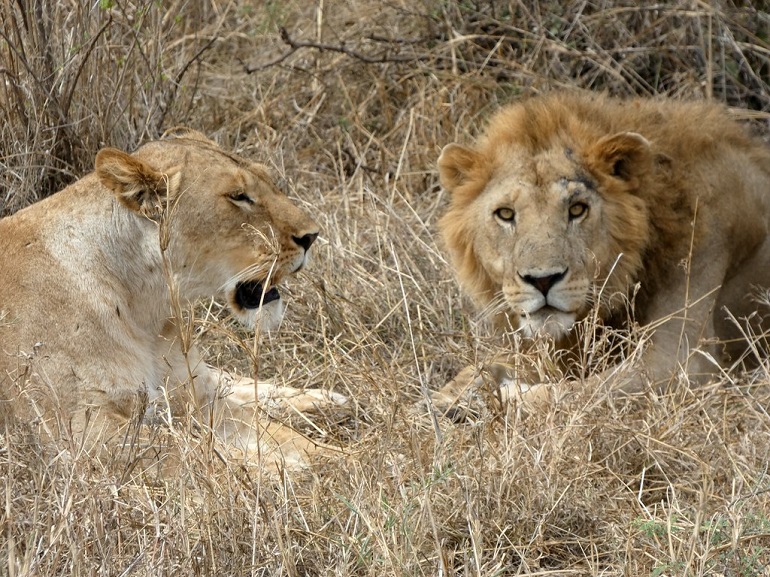
This animal was a part of the Babylonian Empire, and the Lion of Babylon was its premium symbol. The Lion of Judah is the main symbol of the tribe of Judah. Lions play a significant role in the Christian Bible and are the head of beasts in the Indo-Persian chronicles.
Other Indian references to Asiatic lions as deities are abundant, with Vishnu and Narasimha being just two with these associations. Singh is the name for a lion in the Indian Vedic language, and these big cats appear in architecture for protection in India and the Sinhalese people. It is also on Sri Lanka’s flag.
Their reputation from the start was so profound that even the Chinese reveres them, even though lions didn’t live in China. At least, not when it began appearing in their culture.
The West
Western cultures show them in movies, hunting lions, sports, clothing, statues, architecture, and art. This animal is seen as a brave hero and is the main character in many Roman and Greek myths. It is also a part of the Western zodiac.
Lions have been a traditional element in Western royalty since the beginning of time. Knights protected the realm by killing lions, and Richard the Lionheart emulated its bravery.
These animals are on coats of arms, in history books and storybooks, like Aesop’s fables. Aesop was a slave of African descent who lived in Greece between 620 BC and 560 BC.
Excavations in the Greek islands showed images of lions on amulets, with solid connections to Egypt dating to the 6th and 9th centuries BC. These amulets link to the early part of the Iron Age and Sekhmet, an Egyptian deity.
FAQ’s
How Long Do Lions Live?
The lifespan of males in the world ranges from eight to ten years. Females in the wild live between 15 and sixteen years. Lions in captivity can live as long as 25 years, with some having reached the ripe old age of 30.
What Is the African Lion?
African lions are things of legends. They’re called the King of the Beasts because they are known for their strength and courage. As part of the Panthera leo species, they are only smaller than the tiger. Other animals in the big cat family are the leopard and jaguar.
What Is the Purpose of a Lion’s Mane?
Manes show virility and strength and are valuable in attracting females. They also help to intimidate competing males and may offer protection when hunting.
What Is the Pride of Lions?
Lion prides are lion families. These prides typically have two to four mature males and about 12 females, including their cubs. Lion prides can be as big as 40 members. Female cubs mostly stay with pride once they become adults, but young males leave the family unit to join other prides or create their own.
Where Do Lions Live?
Asiatic big cats inhabit western India’s Gujarat National Park, the southern parts of Sudan in Africa, small areas of East and West Africa, and southern Africa.
How Many Lions Are in the World?
According to the International Union for Conservation of Nature, the lion is a vulnerable species at risk of extinction. Only about 30,000 to 100,000 of these animals are left in the world.
Conclusion
The King of the Beasts has a glorious history of bravery, recognized by humankind throughout the ages. But, people continue to threaten the lion’s existence, with Panthera Leo now on the list of vulnerable species.
Although people are engaging in breeding programs to save this animal from extinction, are these conservation efforts enough? Or will people survive and leave future generations only to read about these big cats in books?


